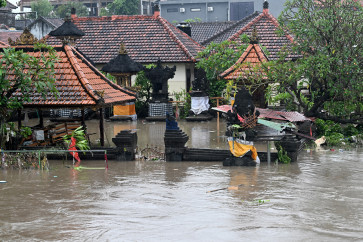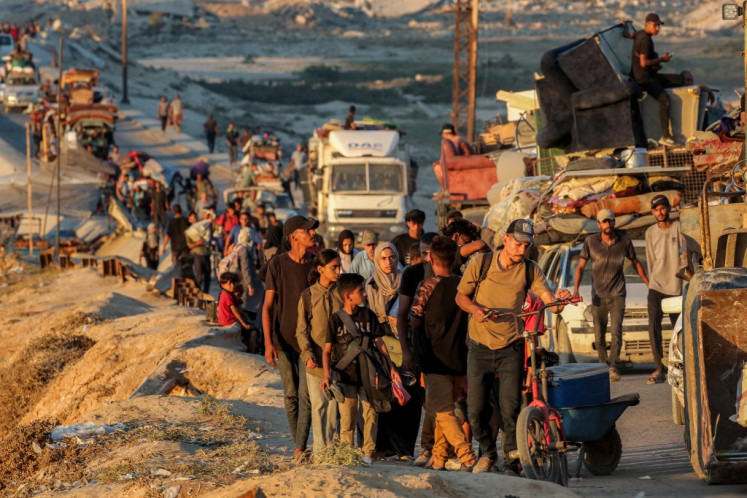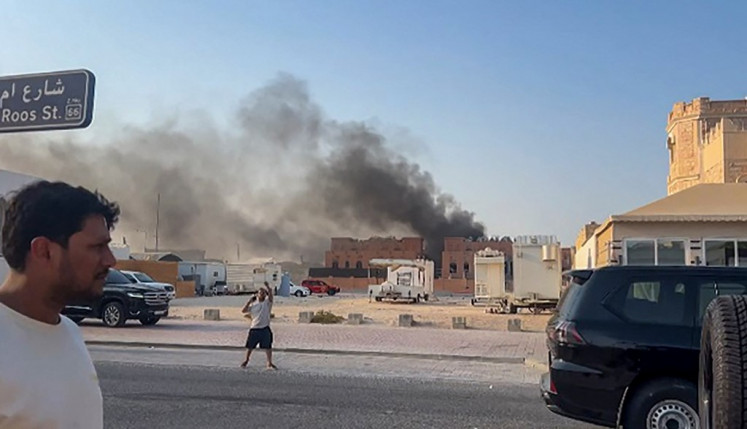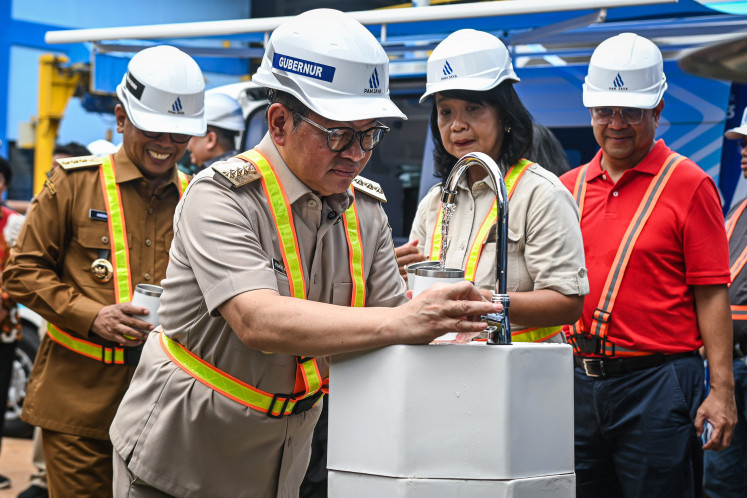Popular Reads
Top Results
Can't find what you're looking for?
View all search resultsPopular Reads
Top Results
Can't find what you're looking for?
View all search resultsCutting through the ‘Mountain of Mist’
The Sukhoi Superjet 100 crash last week was not the first deadly air accident in the vicinity of Mt
Change text size
Gift Premium Articles
to Anyone
T
he Sukhoi Superjet 100 crash last week was not the first deadly air accident in the vicinity of Mt. Salak, which is located some 95 kilometers to the south of Jakarta, standing 2,211 meters above sea level and part of the Halimun Salak National Park.
Various reports indicate that at least six aircraft have crashed around the mountain since 2002, leading to the area’s grim moniker, the “airplane graveyard”.
On Oct. 10, 2002, an ultra-light craft crashed in Lido, Bogor, killing the pilot. Another crash involving an Air Force helicopter in Kemang, also in Bogor, followed on Oct. 29 the next year, leaving seven dead.
In another accident on June 20, 2004, in which a Cessna Skywagon crashed in Cijeruk, Bogor, five were killed. Four years later, an
Air Force Casa 212 crashed in the area, killing 18 passengers, mostly air force officials and aerial-mapping experts.
On April 30, 2009, a trainer aircraft belonging to the Flight Training Center (PLP) Curug crashed in Tenjo, Bogor, killing three.
The Sukhoi Superjet 100 with 45 people on board which crashed into a cliff on Mt. Salak last Wednesday adds to the long list of accidents that have occurred in the area.
Besides being the graveyard for many airplanes, Mt. Salak is also well-known as a place where many climbers have met their end.
In 2007, eight hikers from junior high school SMPN 6 in Jakarta died around the Kawah Ratu crater of the mountain. In 2008, another hiker died after running out of supplies.
While various scientific reasons for the crashes have been touted by many, locals who reside on the mountain’s slopes cite other, decidedly more other-worldly, reasons for the incidents.
They believe that the peak of Mt. Salak is a “forbidden area” which cannot be approached by any person.
“A bird will instantly die when it flies near to the cliff into which the Sukhoi aircraft crashed,” said Ujang, a resident in Tenjolaya district in Bogor.
He said that he used to gather limes and lemons from a garden located near the cliff. However, he stopped doing so after the superstitious stories began to circulate. Other locals were also afraid to gather wood from forests near Mt. Salak’s peak, he said.
“Locals living around Mt. Salak really heed such restrictions —avoiding the peak of the mountain — but, I’m afraid those coming from large cities ignore them,” he said.
The Forestry Ministry’s director of environmental services and utilization of conservation areas and protected forests, Bambang Supriyanto, said that the summit of Mt. Salak was frequently used as a meditation spot.
According to him, locals believe that the tomb of Eyang Gusti is located at the summit, which can be reached by mountaineers along hiking routes from Cicurug and Girijaya village.
The ritual of meditating at the summit of Mt. Salak was performed by several people throughout the year, Bambang said.
“I have always reminded pilots to be careful when flying across Mt. Salak, as the area is rich in gold and galena that can disrupt navigational instruments,” he said.
According to Bambang, the utmost prudence must be applied by those who wish to travel around Mt. Salak, as the mountain area is known to be subject to mists and fog. It was this very condition that led people to name the mountain area “halimun”, which means “misty” in Sundanese, he added.
Mt. Salak is an active volcano and last erupted in 1938. Currently, the slopes have over 200 spots of sulfur gas emissions. It has two summits: Salak Peak 1 is 2,211 meters above sea level and Salak Peak 2, which is 2,180 meters high.
The Sukhoi Superjet 100 is estimated to have crashed into the mountain at a height of around 2,086 meters above sea level.
The evacuation process of the remains of the crash victims was still underway as of Sunday. One of the volunteers in the evacuation, which is approaching its fifth day, is a local named Isak Tumetir.
“I volunteered and have participated in this evacuation process since Thursday,” Isak said.
“I drop into the ravine without ropes, I can’t sleep because of the smell [of dead bodies] and I have barely eaten anything as the meals dropped from the helicopters could not be eaten since they were damaged.”
“Every time I am thirsty, I have to drink water flowing from the Ciapus river — a river notorious for its smell among the rescuers since some body parts from the crash’s victims are scattered there.” (sat)/(riz)/(mim)










